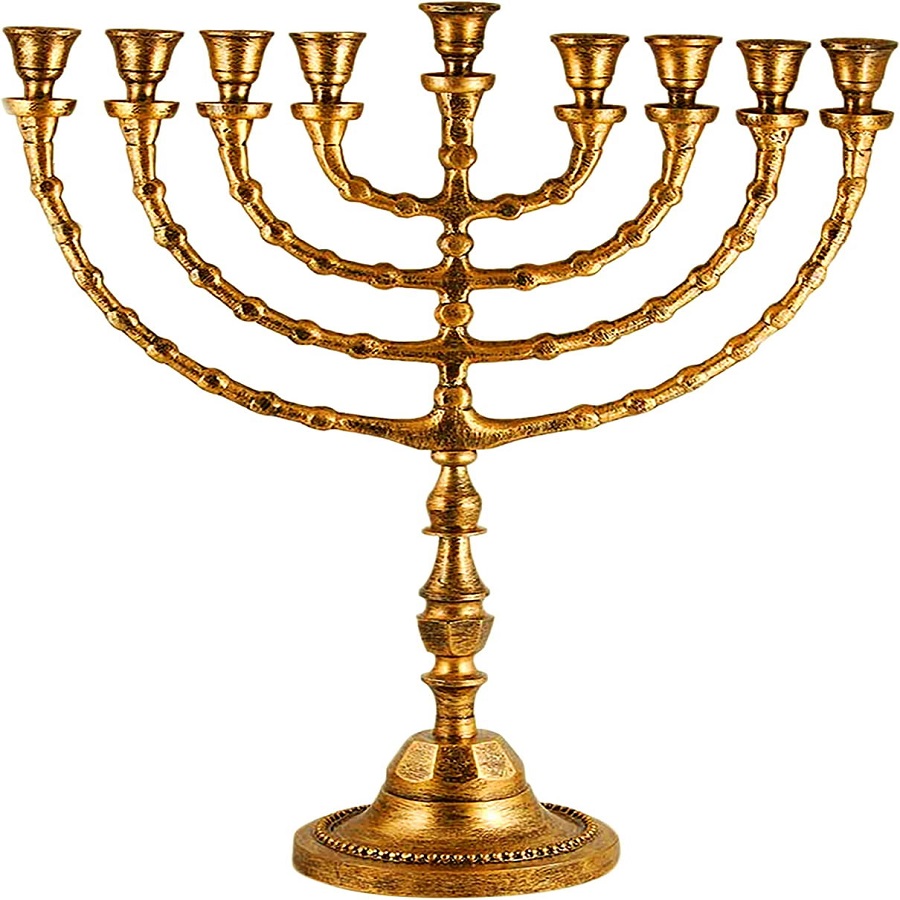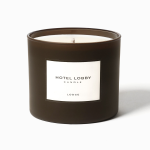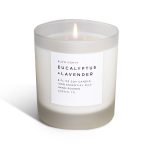The Significance of the Menorah in Hanukkah
The lighting of the menorah is central to Hanukkah. It stands as a symbol of past miracles and hope. It reminds us of the ancient Temple’s golden candelabra, lit with pure sacred oil. Today, people light menorahs to bring brightness into winter’s dark days. They use candles or oil to kindle the menorah each night of the festival.
The Historical Roots of the Menorah and its Eight Branches
Menorahs echo the seven-branched candelabrum from Jerusalem’s ancient Temple. The Hanukkah menorah, however, adds an eighth branch. Each branch represents a day of the celebration. On Hanukkah, we recall the Jews’ struggle, their temple’s rededication, and the oil that lasted miraculously for eight nights.
Menorah vs. Hanukkiyah: Understanding the Differences
The term ‘menorah’ often gets used for the Hanukkah candelabrum, but this isn’t quite correct. A traditional menorah has seven branches, linked to the Temple. A hanukkiyah has nine holders – eight for each night, plus one for the shamash, the helper candle. Recognizing the difference honors the tradition and keeps the holiday’s history alive.

The Ritual of Lighting Hanukkah Candles
The act of lighting Hanukkah candles is steeped in tradition and significance. Each evening of Hanukkah, a new candle is lit to celebrate the miracle of the oil that lasted eight days in the ancient Temple. This practice involves specific steps and holds deep meaning for those who participate.
The Order and Method of Lighting the Menorah
When lighting the Hanukkah menorah, one starts by placing the candles from right to left. This aligns with the Hebrew reading direction. However, when lighting them, the order is reversed; going from left to right. Each night, one additional candle is lit, reflecting the chronology of the miracle. It’s common to use a shamash, a ‘helper’ candle, for kindling each of the others, keeping the sanctity of the ceremonial lights intact.
The Role of the Shamash in the Hanukkah Tradition
The shamash plays an essential role in the Hanukkah celebration. It is not only the practical tool for lighting the other candles, but it also stands apart, often placed higher or lower on the menorah. This separation underlines its unique purpose – to serve and not to be counted among the holy lights symbolizing the days of Hanukkah. Its role reflects a lesson in humility and service, which is core to the holiday’s values.
The Symbolism of Light during Hanukkah
The season of Hanukkah ushers in a spiritual luminescence, distinct and meaningful. Lighting the menorah goes beyond a mere ritual; it symbolizes the conquering of darkness through faith. Each candle flickering on the Hanukkah menorah is a silent testament to perseverance and hope. It’s this very light that emphasizes the power of purity and righteousness.
Bringing Light to Darkness: The Spiritual Meaning
Each Hanukkah candle, when lit, throws light that pierces shadows of ignorance and despair. This light is a beacon of wisdom and divine guidance, reflecting the miracle that occurred centuries ago. It’s not only the physical light we cherish but the enlightenment it promises to every soul embracing the festival.
The Menorah as a Symbol of Jewish Identity and Dedication
The menorah is more than a candelabrum; it’s a flagstaff of Jewish continuity. It publicly asserts Jewish presence and identity. Lighting the menorah is a declaration of dedication to Jewish tradition and values. It stands as a proud symbol in windows and public spaces, inviting all to reflect on the resilience and commitment that Hanukkah commemorates.

The Colors and Composition of Hanukkah Candles
The Aesthetic and Traditional Choices in Candle Colors
Hanukkah candles come in various colors and styles. While there’s no strict rule about their colors, many choose hues for their beauty. People often pick blue and white candles, reflecting Judaism’s colors and Israel’s flag. Others select multi-colored sets for a festive display. The choice is personal, linking aesthetics with the tradition of ‘hiddur mitzvah’, which means enhancing a commandment through beauty.
Wax vs. Oil: Modern Adaptations and Preferences
Traditionally, the menorah was lit with pure olive oil, as in the Hanukkah story. Today, most people use candles made of wax or sometimes soy. These are more accessible and convenient for modern-day celebrations. Some, however, prefer oil, maintaining a connection to the ancient practice. Whether using oil or wax, the key is that the lights burn for at least 30 minutes, sustaining the holiday’s spirit each night.
Timing and Practices for Lighting Hanukkah Candles
Hanukkah’s candle lighting carries deep tradition. Timing is integral to the practice, embracing both ritual and adaptability.
When to Light the Candles: Tradition and Flexibility
Traditionally, lighting Hanukkah candles occurs at nightfall. Nightfall is marked by three stars’ appearance in Jewish tradition. Yet, there’s flexibility in modern practice. Candles can be lit later, accommodating varied schedules.
Candle duration is important. Ideally, each Hanukkah candle should burn at least 30 minutes. This ensures the ceremony’s essence lasts nightly. Each evening brings a new light, aligning with the historical miracle.
Public Candle Lighting Ceremonies and Their Significance
Public menorah lightings are becoming more visible. Such events showcase Jewish pride and educate communities about Hanukkah’s meaning.
In cities worldwide, large menorahs illuminate public spaces. These ceremonies reinforce a sense of unity and identity. They mirror the menorah’s message: courage and the spread of light. These public displays echo ancient tradition and modern Jewish resilience.

Hanukkah Foods and Their Connection to the Candles
The Role of Oil in Hanukkah Foods Reflecting the Miracle
In Hanukkah celebrations, the role of oil extends beyond the menorah. It seeps into festive foods, symbolizing the holiday’s miracle. Foods fried in oil, like latkes and sufganiyot, remind us of the oil that burned for eight days. This is not just a tradition, it’s a culinary reflection of the Hanukkah story. The crispy latkes and sweet doughnuts are more than treats. They are edible memories of a time when a little oil sustained the Jewish faith.
Exploring Traditional Hanukkah Dishes and Their Symbolic Meanings
During Hanukkah, two dishes stand out: latkes and sufganiyot. Latkes, crispy potato pancakes, represent the oil’s endurance in the Temple. Sufganiyot, jelly-filled doughnuts, symbolize the sweetness of victory. Both are deep-fried, reinforcing the oil’s significance. Let’s not forget the dreidel game, another holiday custom. It once disguised Torah study under oppressive rule. Today, it brings fun and chocolate gelt to the celebration. As we enjoy these traditions, we remember the story and lessons behind Hanukkah. They offer a time for joy and spiritual reflection each year.
The Story and Lessons Behind Hanukkah
The story of Hanukkah is filled with courage and faith. It centers on a group of Jewish rebels, the Maccabees, who stood against the Seleucids. The Seleucids aimed to erase Jewish traditions, but the Maccabees fought for their right to practice their religion. Their victory was miraculous, as was the small amount of oil that burned for eight days in the Temple’s menorah, signifying the divine presence and blessing.
Retelling the Miracle of Hanukkah: The Oil and the Maccabees
Hanukkah celebrates the miracle of the oil that lasted far beyond its time. The Hanukkah menorah—also called a Hanukkiah—befittingly has eight branches for each night’s candle, plus one for the shamash. The Maccabees’ victory and the oil’s endurance are retold each year, inspiring faith in miracles and divine aid.
Hanukkah as a Time for Rededication and Spiritual Growth
Hanukkah offers a chance for reflection and recommitment to core values. As families gather to light candles, they focus on themes such as freedom, resilience, and the pursuit of justice. The lighting ritual itself is a daily reminder to nurture one’s spiritual wellness and to bring light into the lives of others.


